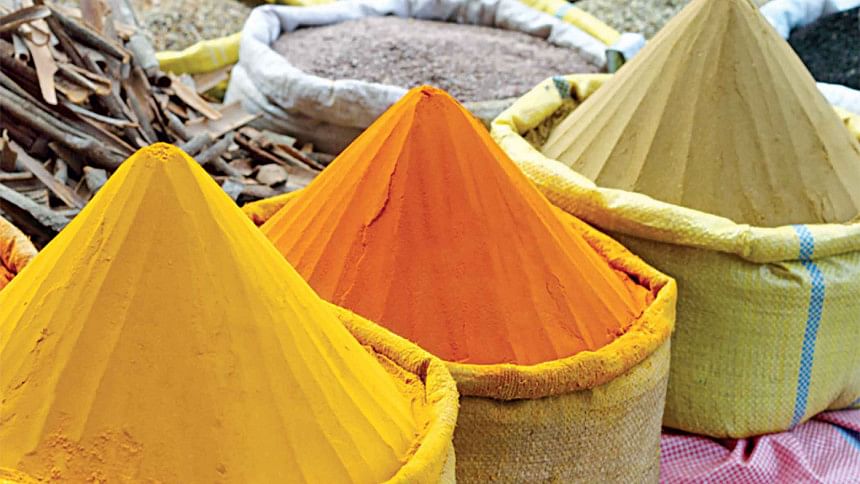Immunity boosting turmeric: Is Lead a concern?

Turmeric is an important ingredient in many South Asian dishes and is commonly used throughout the region for its rich flavour and medicinal properties. Bangladesh is the world's 5th largest turmeric producer. Unfortunately, recent studies conducted by icddr,b and Stanford University have found dangerous levels of toxic lead in turmeric samples from Bangladesh. Lead is particularly dangerous to young children and can cause permanent brain damage and other illnesses. The studies find that lead is being added to turmeric intentionally to give low quality turmeric roots a brighter colour.
Turmeric, known as the 'golden spice', has been used for medicinal purposes since ancient times. In folk medicine, turmeric has been used in therapeutic preparations over the centuries in different parts of the world including reducing inflammation, healing wounds, dispelling worms, improving digestion, regulating menstruation and relieving arthritis etc. During this COVID-19 pandemic, as people are particularly concerned about their health and immune systems, the consumption of turmeric for its perceived benefits may have increased.
Good quality turmeric is naturally bright yellow due to the presence of curcumin. Typically, harvested turmeric roots are boiled and then dried in the sun. However, if the roots are of poor quality or if they are damaged by rain during the drying process, they will not achieve the bright colour desired by consumers. Since the 1980s, a practice emerged in certain regions of Bangladesh of applying an artificial dye to make dull turmeric roots more attractive to consumers, who want bright and colourful curries. At that time, merchants began adding lead chromate, a bright yellow chemical with toxic properties, to the roots during the polishing process, when the skin is removed from turmeric roots.
Lead chromate is the cheapest yellow dye available in the market. Because lead is toxic, it is only authorised in low-middle income countries (LMIC) for industrial applications, such as in paints. Farmers stated that turmeric merchants can sell poor quality roots and increase profit margins because of this practice of adulteration.
The addition of lead chromate raises a serious public health concern. Lead is a well-known neurotoxin. Elevated blood lead levels among children have been linked with cognitive and behavioural challenges. Lead exposure among mothers may be transferred to their babies during pregnancy or through breast milk, affecting the development of the infants. In adults, lead exposure has also been linked with cardiovascular disease. It is estimated that 62% of Bangladeshi children have elevated levels of lead in their blood.
It is urged that the government should set import limits on lead chromate in Bangladesh and elsewhere to mitigate turmeric adulteration. Screening of turmeric for lead is needed to identify and stop this practice. This should be done in alignment with generating more awareness among producers of the dangers of this practice and empowering consumers with more oversight of how the turmeric they buy is processed.
Dr Mahfuzar Rahman is the Country Director of Pure Earth, Bangladesh.
Email: [email protected]

 For all latest news, follow The Daily Star's Google News channel.
For all latest news, follow The Daily Star's Google News channel. 



Comments